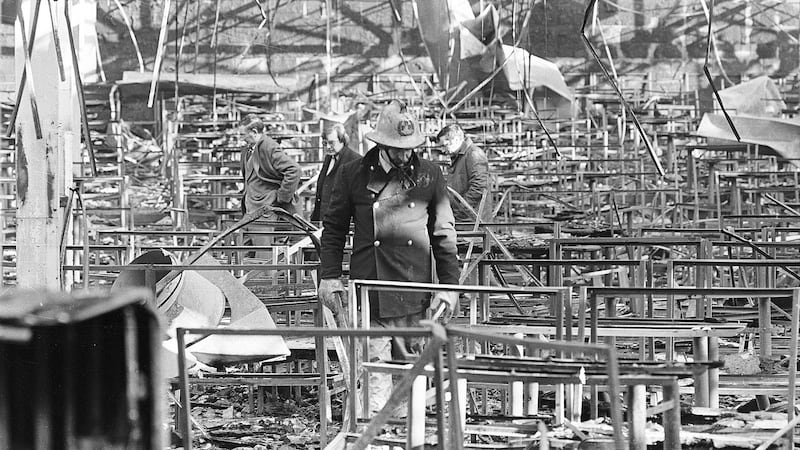Falling oxygen levels, as fire consumed the available air in the Stardust nightclub in which 48 people perished in 1981, was not adequately considered in the original postmortems, Dublin coroner’s court heard on Thursday.
Forensic pathology reports on the causes of death of 11 victims were heard at the inquests into the death of the 48, aged 16 to 27, in a fire in the north Dublin ballroom in the early hours of February 14th 1981.
These bring to 18 the number heard since Wednesday and again the inhalation of toxic fumes, including carbon monoxide and cyanide, was a “causative factor” in all deaths. Alcohol was not a factor in any death.
Distressing details were again heard, including of one victim who survived for almost a week before her life-support was turned off; of those whose remains could be identified only through dental records and in a number of cases were not identified until 2007 after exhumation.
READ MORE
Josephine Glen (16) died five days after the fire, in the intensive care unit at the now-closed Jervis Street hospital, the court heard.
She had been resuscitated in the emergency department using defibrillation to restart her heart. She had sustained “very minimal burns” and it was “likely” she had suffered cardiac arrest due to anoxia – the “effect of a complete lack of oxygen on the body,” the court heard.
Forensic pathologist Dr Ben Swift agreed with Brenda Campbell KC for the Glen family Josephine’s anoxia had been caused by the inhalation of “poisonous fumes” as she was delayed getting out of the venue due to a crush of people at exit 5.
“The longer she spent in this toxic environment the more likely it was she was going to die,” said Ms Campbell. “Indeed,” said Dr Swift.
Josephine’s cause of death was “complications of inhalation of fire fumes”.
The remains of Murtagh Kavanagh (27) were identified after being exhumed on 6th February 2007 for mitochondrial DNA analysis which had not been available in 1981.
Significant “carbon pigmentation” was found in his airways in the original postmortem. His death was due to “rapid incapacitation due to inhalation of fire fumes and heat”.
The final case heard on Thursday was of Robert Kelly (17) whose badly burnt remains were identified through his dental records. He had been at the Stardust with friends including Marie Kennedy (17) who also perished, and was last seen on the dance floor with her.

Then State Pathologist, the late Dr John Harbison, conducted the postmortem examination on Robert and found his carboxyhemoglobin level was six per cent and cyanide was 6.6 per cent micrograms “indicative of minimal inhalation” wrote Dr Harbison.
Des Fahy KC for the Kelly family asked Dr Cary whether, even though those two levels were “relatively low” there were “other factors that didn’t necessarily form part of the findings in 1981″.
Mr Cary said there was a “lack of awareness in general in fire deaths of lack of oxygen, which is pretty fundamental”. One could predict there would be a lack of oxygen in this fire as it was an enclosed premises, he added. “In fires in premises it is very likely there will be a depletion of oxygen in the atmosphere.
So, while the two main toxic components in the atmosphere that could be measured postmortem in blood samples were “not approaching lethal levels” other factors including the rapidly depleting oxygen levels had to be considered, said Dr Cary.
He and colleagues, forensic pathologists Dr Richard Shepherd and Dr Swift, agreed the cause of Robert’s death was “rapid incapacitation due to inhalation of fire fumes and heat”.
Pathology reports were also heard in the cases of Jacqueline Crocker (19), Liam Dunne (18), Michael French (19), David Flood (18), Thelma Frazer (20), Michael Farrell (26), Brian Hobbs (21), and Eugene ‘Hughie’ Hogan (24).
The inquests continue.
- Sign up for push alerts and have the best news, analysis and comment delivered directly to your phone
- Find The Irish Times on WhatsApp and stay up to date
- Our In The News podcast is now published daily – Find the latest episode here















